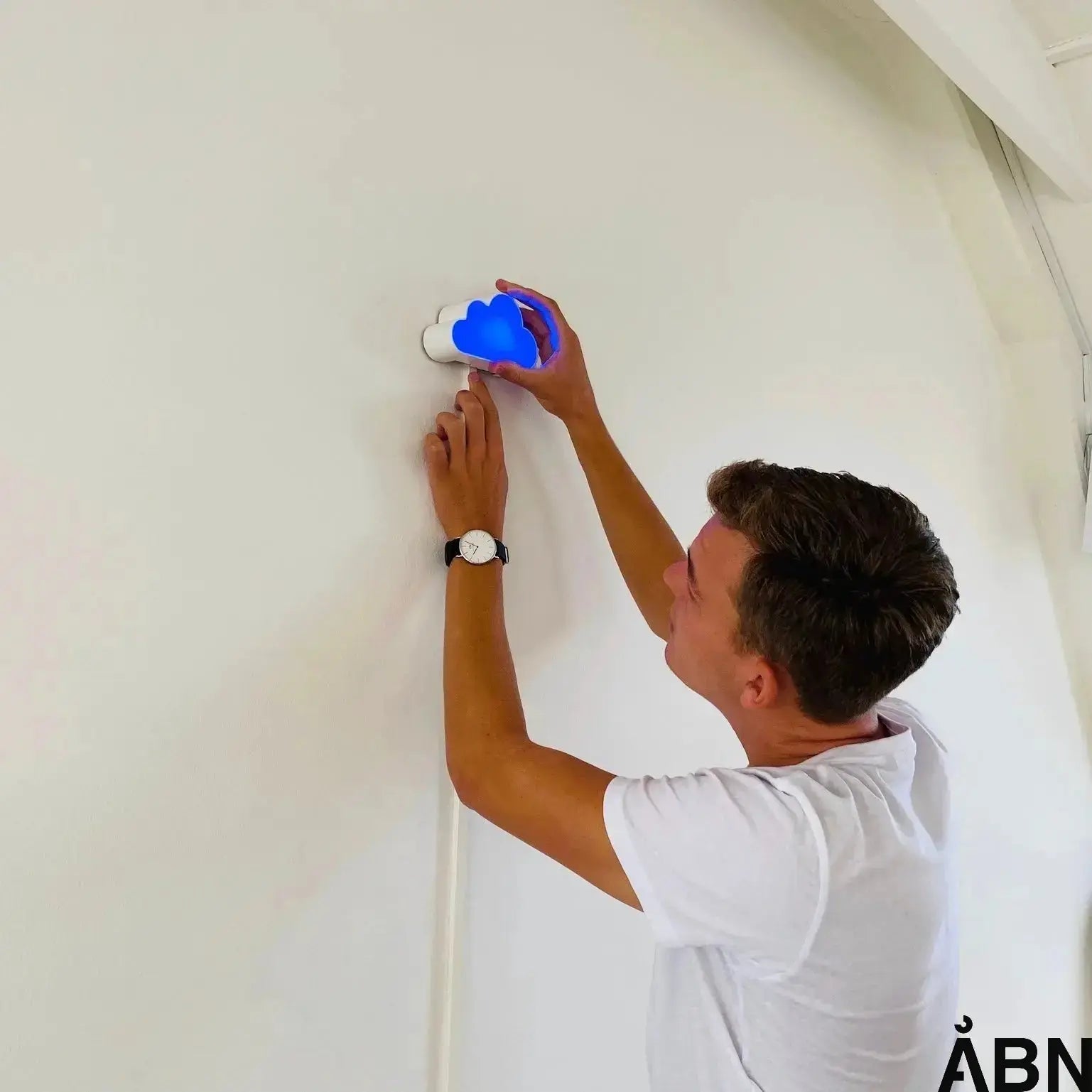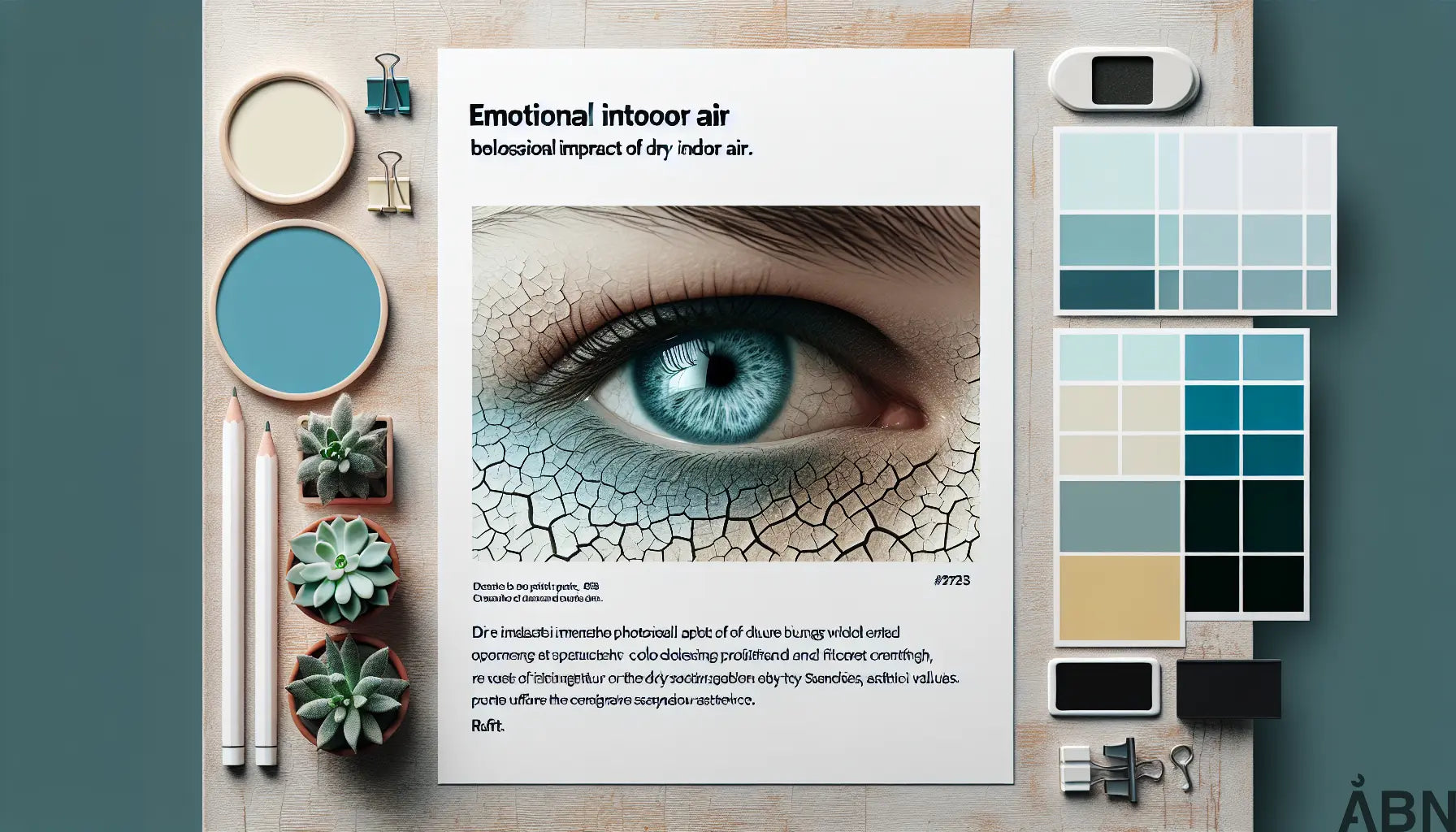What do you do about a dry indoor climate?
You may know it: dry eyes, irritated mucous membranes and a feeling that the air in the room is as lifeless as a winter day without snow. Dry indoor climate is an invisible challenge that affects both our health, well-being and productivity – especially in the winter months, when heating and ventilation suck the moisture out of the air. But what do you actually do about dry indoor climate? And how do you create a healthy and balanced indoor climate at home, in the office or at school?
In this article, we delve into the causes of dry indoor air, what it means for people and buildings – and most importantly: how you can act on it. We guide you through solutions that are both practical, sustainable and technologically smart. Welcome to a journey into the invisible universe of air – where small adjustments can make a big difference.
Why does the indoor climate become dry?
The Danish winter weather is not only hard on the skin – it is also hard on the indoor climate. When the outside air is cold, it contains very little moisture. When we then heat it up indoors, the relative humidity drops dramatically. According to Adapteo , the humidity in classrooms and offices can drop as low as 10-20% during the winter months – far below the recommended level of 30-40%.
It is especially the combination of heating and ventilation that creates an imbalance. Ventilation is necessary to ensure good air quality and remove CO₂ – the invisible guest that sneaks into the room and makes us tired and unfocused. However, if ventilation is not adapted to the needs, it can also remove too much moisture and make the air uncomfortably dry.
Symptoms of dry indoor climate
A dry indoor climate is not only felt – it is also seen and heard. Here are some typical signs:
- Dry eyes and irritated mucous membranes
- Static electricity in clothes and hair
- Increased risk of respiratory infections
- Cracks in wooden floors and furniture
- Plants that are not thriving
For children in schools and daycare centers, it can mean reduced concentration and increased sick leave. For employees in offices, it can lead to headaches and lower productivity. And for buildings, it can mean damage to materials and fixtures.
So what do you do about a dry indoor climate?
Fortunately, there are several effective and sustainable solutions that can help balance humidity levels – without compromising ventilation, energy consumption or comfort. Here are the most important measures you can consider:
1. Optimize ventilation – but do it intelligently
Ventilation is one of the most important factors for a healthy indoor climate. But it's not just about getting fresh air in – it's about getting the right amount of air in, at the right time. According to researchers from Aalborg University, demand-controlled ventilation – that is, ventilation that is adjusted according to activity and number of people in the room – can be the key to balancing both air quality and humidity.
At ÅBN, we work with solutions that make it possible to visualize and understand the indoor climate in real time. Our intuitive sensors and dashboards give you an overview of CO₂ levels, temperature and humidity – so you can act precisely and effectively. It's like having a weather forecast for your indoor climate – and it makes a world of difference.
Read more about our technology here: Indoor climate made understandable
2. Adjust the heating – less heat, more humidity
Did you know that high temperatures lower relative humidity? When we turn up the heat, the air doesn’t just get hotter – it also gets drier. According to NRGi , a small adjustment to the temperature can make a big difference. Try to keep the temperature between 20-22°C and avoid overheating – it benefits both the indoor climate and your energy bill.
3. Use humidifiers – with care
Humidifiers can be an effective solution during periods of very dry air. They add moisture directly to the room and can quickly raise the humidity to a more comfortable level. But they should be used with care – too much moisture can lead to mold and other problems. Keep an eye on the humidity and aim for 30-40% as a rule of thumb.
4. Decorate with plants – nature's own humidifiers
Plants are not only beautiful – they are also small, green indoor climate heroes. Many plants release moisture through their leaves and can thus help to raise the humidity naturally. Plants such as peace lilies, ferns and rubber trees in particular are good choices for offices and institutions.
5. Maintain ventilation systems – and size them correctly
A ventilation system is only as good as its maintenance. Filters need to be cleaned, air volumes need to be adjusted, and the system needs to be adapted to the room’s use and number of people. According to Adapteo , air renewal in schools should be around 6 liters per second per person – but this requires ongoing adjustment and attention.
At ÅBN, we help document and visualize behavior and indoor climate, so you can see how the building is actually used – and adjust the systems accordingly. See more about our behavior data and documentation .
Indoor climate superheroes: Data, technology and awareness
A healthy indoor climate is not just about technology – it’s also about people. When we understand how our behavior affects the air around us, we can make better choices. ÅBN’s mission is to make indoor climate as understandable as the weather forecast – and to give children, teachers, employees and decision-makers the tools to take action.
Our solution, the Cloud, is a good example: a visual and intuitive device that shows the state of the indoor climate in real time. It makes it easy to see when it's time to air out, turn down the heat or adjust the ventilation. It's technology that creates behavior change – and better well-being.
FAQ: Frequently asked questions about dry indoor climate
What is the ideal humidity indoors?
The ideal relative humidity is between 30% and 40% in the winter and up to 60% in the summer. Too low humidity can lead to discomfort and health problems.
How do you measure humidity?
Humidity is measured with a hygrometer.









